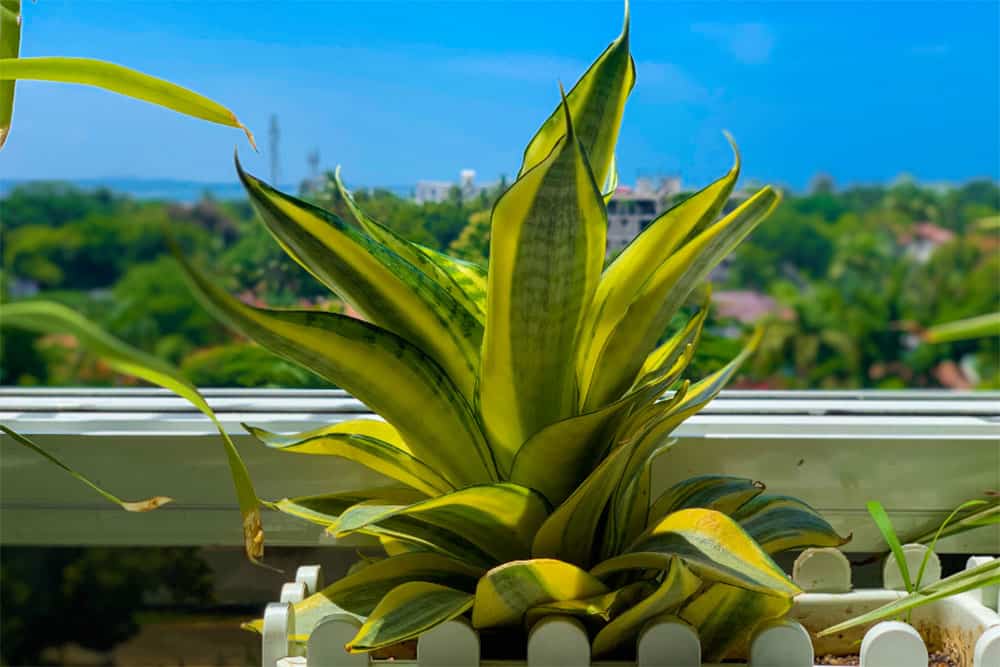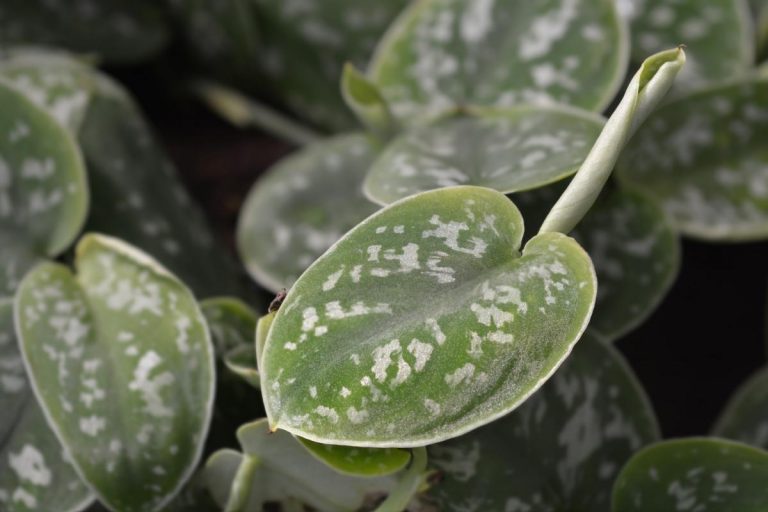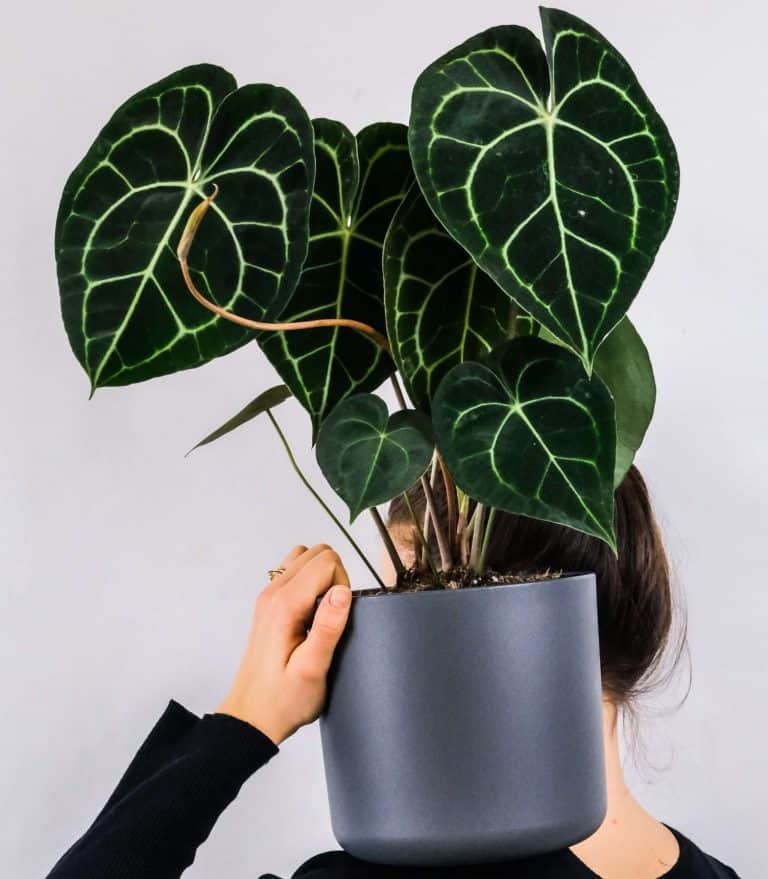Why Is My Snake Plant Turning Yellow? (And How To Fix It!)
Are you wondering, Why Is My Snake Plant Turning Yellow? Here is a quick guide as to why and how to fix it, so you can revive your snake plant!
Snake plants (Dracaena trifasciata) are one of the most popular house plants for their resilience, hardiness, and simple beauty. They’re the ideal “filler” houseplants – if you’ve got an empty space that needs a bit more colour, a snake plant will do the job. The leaves of a snake plant are sword-like and stiff that are generally green with bands and a yellow border.
However, if a leaf of a snake plant is becoming progressively more yellow, this can be a sign of a problem.
Despite the fact snake plants are hardy and resilient, they still have specific care requirements that must be met in order to keep the plant alive and healthy. Otherwise, you’re dealing with a mess of yellow, brown, or black leaves and the remains of a dead plant.
If you’ve ever wondered “why is my snake plant turning yellow?”, we’ve got you covered. Here is everything you need to know about why your snake plant is turning yellow, and our top tips on preventing and curing yellow leaves!
DISCLAIMER
Related Articles:
Some of the links on here are affiliate links and I may earn if you click on them, AT NO EXTRA cost to you. Hope you find the information here useful! Thanks.
- Why Is My Bamboo Turning Yellow? [And How To Fix It!]
- Why Is My Plant Drooping?[And How To Fix It!]
- Why Is My Venus Fly Trap Turning Black?[And How To Fix It]
- Why Is My Orchid Wilting? [And How To Fix It!]
- Why Are The Leaves On My Plant Curling?[And How To Fix It!]
- Why Is My Garlic Purple? [And Is It Better Than White Garlic?]
Consider planting your snake plant in porous terracotta pots!

Why Is My Snake Plant Turning Yellow?
Before we go into tips on how to avoid yellow leaves, here are the main reasons why your snake plant is turning yellow.
Root Rot
Root rot is caused by excessive water pooling at the roots of a plant. This occurs when the plant has been unnecessarily watered when the soil is damp enough as it is. Like most other house plants, snake plants are prone to developing root rot if they are improperly watered.
Use a moisture meter to get an accurate reading for your plants’ watering needs!

As well as frequent and unnecessary watering, root rot can be caused by improper soil that doesn’t allow for ventilation and evaporation to occur, nor does the soil offer a good drainage system.
As the name suggests, the roots begin to rot, which eventually kills the plant if left untreated. Most symptoms of root rot aren’t visible to the exterior of a plant, except for one sign – yellowing leaves.
When a snake plant has yellow leaves, this is often a sign of overwatering resulting in root rot. When yellow, the leaf is essentially dead because it’s not getting any nutrients from the rotted roots.
To avoid root rot, you must only water your snake plant when the soil is completely dry. The best way to check if the plant needs watering is to stick your finger one inch into the soil. If the soil is damp, you don’t need to water it.
If the soil is bone dry, it’s time to water the plant. Snake plants actually work best in dryer conditions than moist ones, so you should only water your snake plant once every 7-10 days.
The type of soil you use can also contribute to root rot. Snake plants enjoy loose, well-drained soil that will prevent water from pooling around the roots. Instead, the loose soil will allow the excess water to evaporate into the air.

Note- If you want to make your green fingers happier and your life easier, you can use this affordable 83 pieces ultimate gardening set to help you repot like a pro!

Too Much Sunlight
Another reason why your snake plant has yellow leaves is because of too much exposure to sunlight.
Snake plants are pretty hardy when it comes to natural light as these plants are succulents, but this doesn’t mean the exposure to sunlight needs to be direct. Instead, the natural sunlight must be indirect.

This means that if your snake plant sits on a windowsill or surface that is constantly in the sunlight, this is probably the cause of the yellowing leaves. Yellow leaves mean that the plant is burning from the sun, which then eventually turns brown and crispy. Once they have turned brown, the leaves cannot be restored.
While you might assume that a window creates a barrier to avoid direct sunlight, the glass actually creates a magnifying effect. The sunlight will then concentrate on specific parts of the leaves, resulting in burnt leaves.
Placing window blinds can significantly reduce the sunlight intensity!

Stress From Temperature Changes
House plants require consistency to thrive.
This consistency refers to the soil, watering, potting, light, and temperature requirements. Any sudden changes in these requirements, particularly the temperature, can result in the stress of a plant. That’s right – stress from drastic changes in temperature leads to yellow leaves.
The main reason to avoid putting your snake plant through constant temperature changes is that it completely affects the evaporation process. When moved into a location too hot or too cold, the evaporation process is changed, resulting in dehydration or the drying out of the plant.
To avoid causing stress to a snake plant, make sure not to move it into a new location too often.
Of course, in the early stages, you might need to relocate the plant to find its perfect environment – but once it’s found a home, leave it there. Just make sure the plant isn’t near any heating or cooling elements like air conditioners or radiators.
Pests
Pest infestations such as mealybugs and spider mites aren’t too common in snake plants, but they can still be the cause of yellowing leaves. The best way to get rid of these pests is to make a solution of ⅓ rubbing alcohol and ⅔ water. Then, spray this onto the leaves in a spray bottle. This solution is strong enough to kill the bugs without damaging the plant itself.
Excessive Nutrients
Snake plants are extremely hardy plants, which means that they don’t really need fertilizer. These plants get all the nutrients they need from photosynthesis, so any fertilizer is just excessive and can actually do more harm than good. The only time you might need to feed your snake plant is once every 2-3 months.
When over-fertilized, the fertilizer will do one of two things. It will either burn the leaves, causing them to turn yellow, or it will absorb too much moisture from the soil.
This will prevent the plant from absorbing the moisture it needs to survive, which essentially results in a dehydrated plant. This can also turn the leaves yellow.
If you think you may have over-fertilized your snake plant, it’s best to leave the plant alone for a few weeks to months.


![How To Harvest Oregano Without Killing The Plant? [Personal Experience!]](https://aboveandbeyondgardening.com/wp-content/uploads/2022/10/How-To-Harvest-Oregano-Without-Killing-The-Plant-7-768x442.jpg)
![Why Is My Orchid Wilting? [And How To Fix It!]](https://aboveandbeyondgardening.com/wp-content/uploads/2021/10/Why-Is-My-Orchid-Wilting--768x512.jpg)
![How To Harvest Cilantro Without Killing The Plant?[The Best Way!]](https://aboveandbeyondgardening.com/wp-content/uploads/2022/10/how-to-harvest-cilantro-without-killing-the-plant-6-768x512.jpg)
![Growing Kale Indoors Hydroponically: A Step By Step Guide [2023]](https://aboveandbeyondgardening.com/wp-content/uploads/2022/10/Growing-Kale-Indoors-Hydroponically-1-768x512.jpg)

